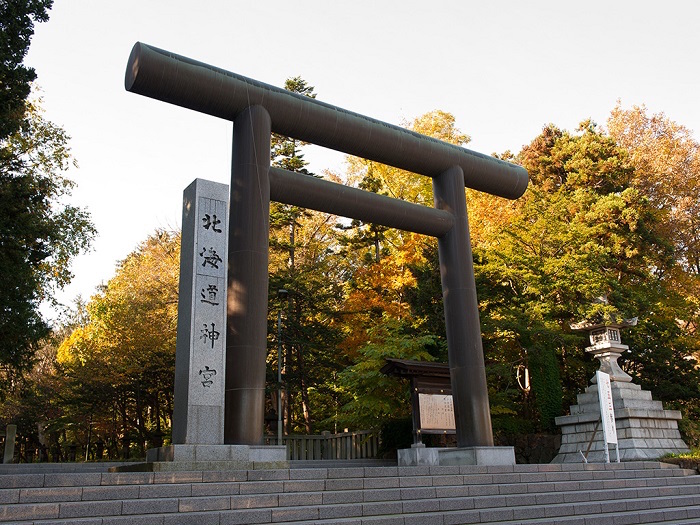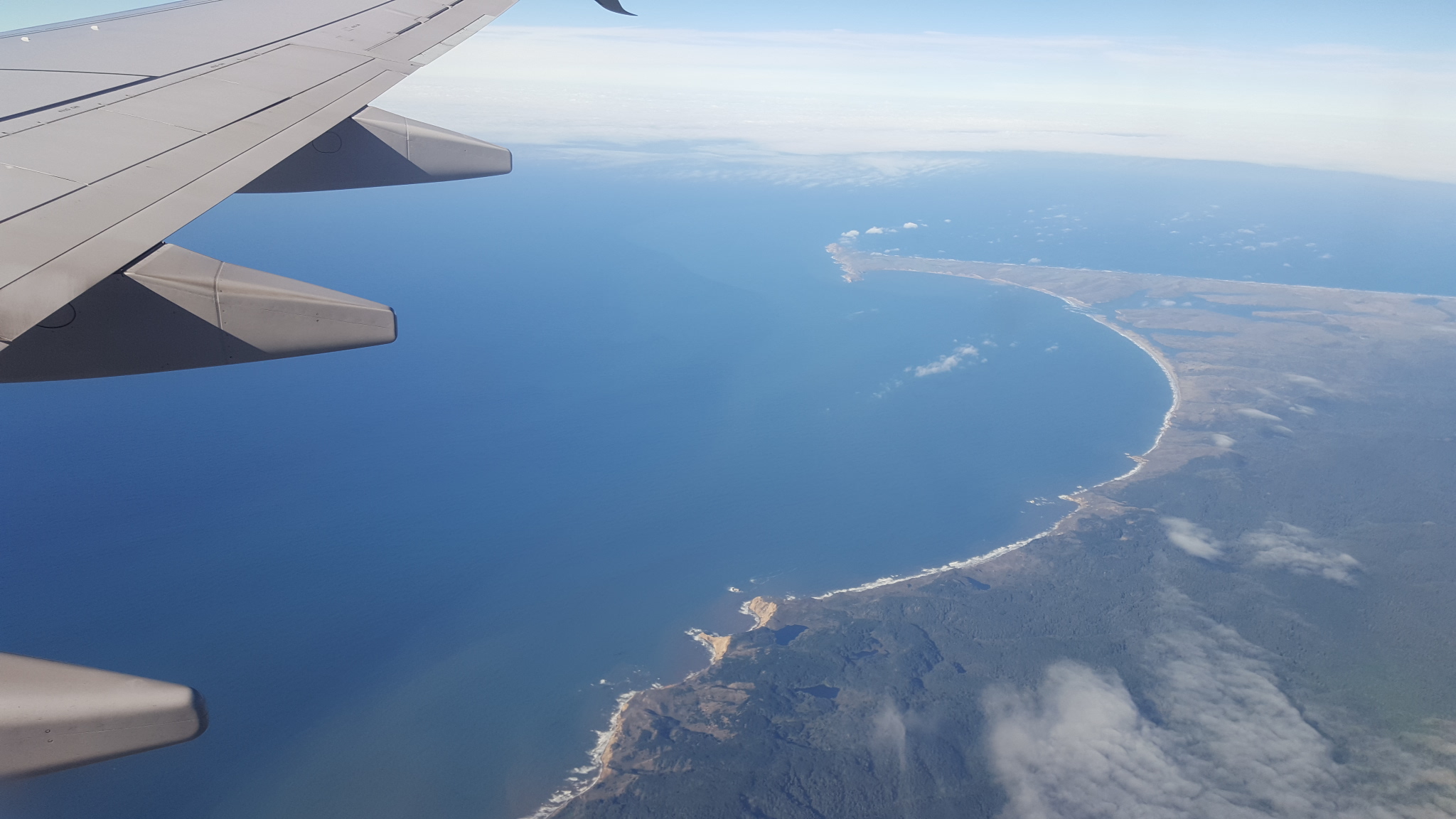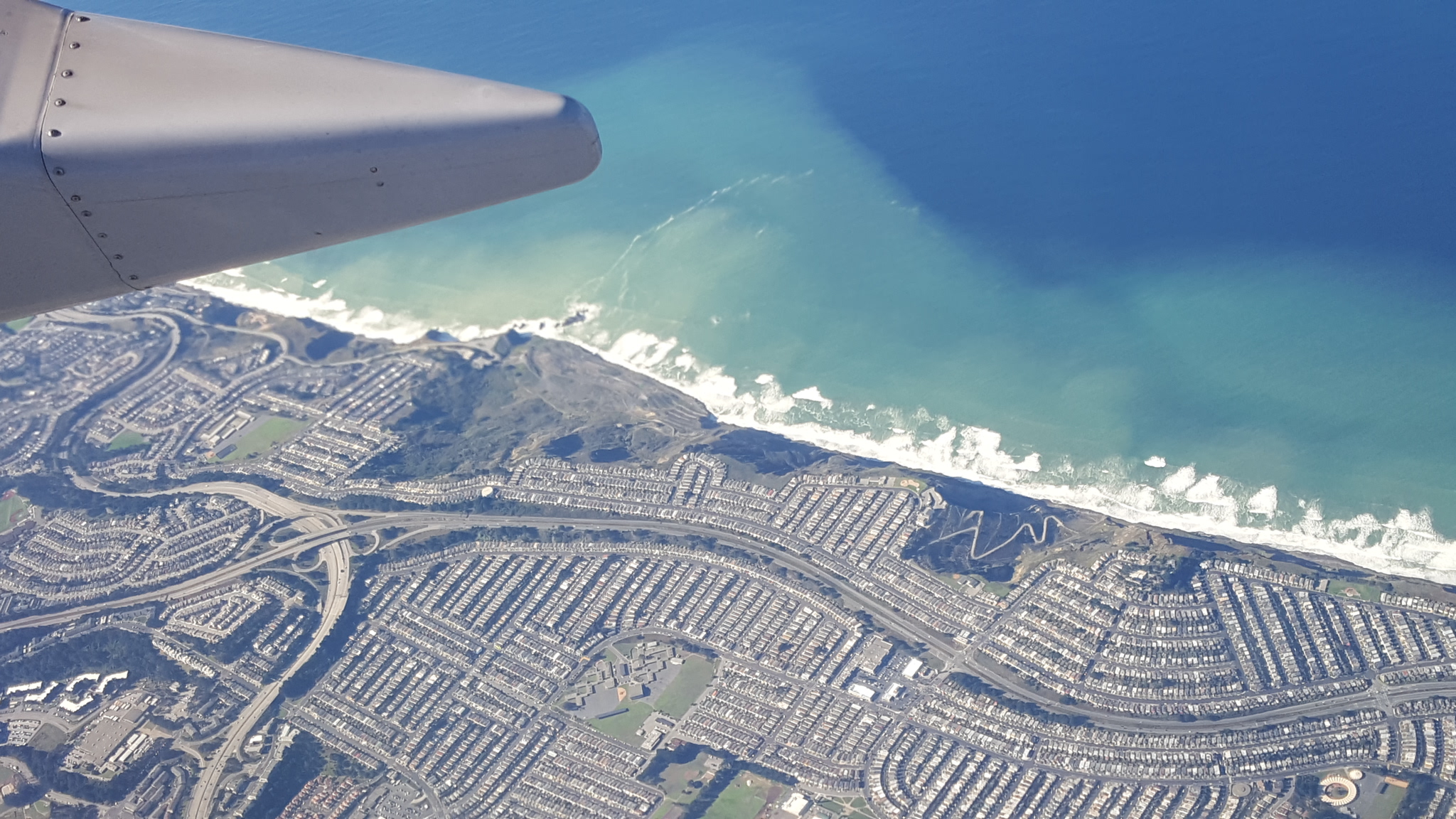GPSEN Feed
BACK TO TEAM PAGE
-
 Lin Harmon-Walker 10/28/2016 7:19 PMReport for October 23 (posted 10/28)
Lin Harmon-Walker 10/28/2016 7:19 PMReport for October 23 (posted 10/28)
This was the day to return home, but I had half a day to wander around Curitiba and take pictures. Since it was Sunday, nearly all businesses were closed - one hallmark of a society that identifies itself as majority Catholic. My attempt to find a store open that sold field guides to the local birds was futile. Lesson learned for next time! At least I learned some of the bird names yesterday at the botanical garden, where mother birds were sheltering chicks out on the huge expansive lawn.
Journal:
Without a lot of activity downtown today, the "bones" of the city were exposed to view. There seemed to be a concerted effort by homeowners to beautify their properties with plants and trees. I continued to be impressed with the variety of trees, not just the palm trees I expected.
Curitiba receives a lot of rain, like Portland, and they are both garden cities. I had a lot of difficulty with Internet accessibilty and cell phone coverage here, plus the occasional power outage, but it forced me to really observe and inhabit this place rather than instantly interpret everything I saw electronically. Looking forward to going home, but I definitely want to return to Curitiba for a longer stay some day, maybe out at the Mennonite B&B. -
 Lin Harmon-Walker 10/28/2016 7:06 PMReport for October 22 (posted 10/28)
Lin Harmon-Walker 10/28/2016 7:06 PMReport for October 22 (posted 10/28)
This was field day at the RCEs of the Americas conference, so I got way more walking in than budgeted for in my Ecochallenge. The first part of the day was a ride on the city bus that took us to various stops around Curitiba and did a good job of covering all its highlights and neighborhoods, including in the botanical garden, the art museum and food carts across the street that reminded me strongly of home (except there were no vegetarian offerings), and the communities nestled in the forested hills (another reminder of home). In the afternoon, we had an extraordinary long-distance bus tour to a Mennonite community in Parana and heard the story of how a colony of Mennonites in Ukraine fled the Bolsheviks and made a tortuous journey across Europe to Canada and thence to Brazil and Uruguay. The houses were hand-built and each Mennonite family received some land to farm. We visited an exquisite B&B in farm country and had a lovely dinner in their dining hall overlooking the fields livened by new lambs and foals running around their mothers (the seasons being reversed, this was spring in Parana).
Journal:
Landscape is so important: wide open fields, forests, hills, valleys far away from cities, where you can see vistas where your food is being grown and can watch the sun crossing the sky and sinking into the horizon. Oregon preserved its farmland and forestland in the 1970s by imposing urban growth boundaries around its cities, and preserved the Columbia River Gorge with a National Scenic Act.; Curitiba is facing the challenges of urban growth, and I was able to have a conversation this evening with a professor about the difficulties of land use planning in Brazil given all the pressure to develop and the somewhat haphazard way things are built. But for now the non-forested agricultural lands seem to be in good shape. -
 Lin Harmon-Walker 10/28/2016 6:53 PMReport for October 21 (posted 10/28)
Lin Harmon-Walker 10/28/2016 6:53 PMReport for October 21 (posted 10/28)
So my idea of posting my notes from Brazil is already a little messed up because of the time lag ... the first full day of the conference was the 20th, not the 19th, but at least these are being entered in chron order. (I am still time lagged, several days after returning home.)
The second morning of the conference was spent at the beautiful eco-friendly business school, with organic gardens and examples of sustainable buildings (and a colorful staircase printed with the Sustainable Development Goals). The North American RCEs made their presentations there in the morning. We had lunch at the largest indoor farmer's market I have ever seen, then we moved to the Universidade Tecnologica Federal do Parana's Green Office building, an ingeniously crafted house/office showcasing sustainable building design and materials, for a talk about their specialization courses in sustainable construction.
Journal:
Today's walks through a variety of natural settings (parks, organic gardens at a school site, an ecoroof at the Green Office) really hit home to me how much nature can be integrated into cities. Portland and Curitiba are different examples of this theme in terms of the setting and species that make their homes in the cities, but the dedication to public green spaces and the desire to build sustainably are remarkably similar. It is no coincidence that both cities are considered Regional Centers of Expertise in Education for Sustainable Development.
-
 Lin Harmon-Walker 10/28/2016 6:22 PMReport for October 19 (posted 10/28)
Lin Harmon-Walker 10/28/2016 6:22 PMReport for October 19 (posted 10/28)
First day of the RCEs of the Americas conference, in beautiful Curitiba. Today on the bus ride to the university we stopped at one of the striking city parks, then spent the day on reports from the Latin American RCEs sharing their work with environment and development.
Journal:
Evidence of colonialism is everywhere in Brazil in the public parks, but also evidence of the species of trees, plants, and birds that were here long before the colonizers. The park we saw today in front of the university was originally facing farmland rather than the original smaller city of Curitiba. The idea was that scholars should be connected to the land. It's hard to imagine farmland where a bustling city grew, but the idea of being tied to nature is not so hard to imagine (and should be a fundamental part of education). The birds here have magnificent voices! -
 Lin Harmon-Walker 10/28/2016 6:12 PMReport for October 18 (posted 10/28)
Lin Harmon-Walker 10/28/2016 6:12 PMReport for October 18 (posted 10/28)
Recirculated airplane air, recirculated airport air, the movement of people from one place in an airport to another, the waiting in lines. It all reminds me of the old movie Koyaanisqatsi (Life Out of Balance). Precious little nature to be had here, even looking out of the airport windows there are only stands of vegetation far away in the distance.
Arriving in Curitiba mid-afternoon, baggage claim, then a van to the hotel. Voila, the tropics! Curitiba has a reputation in Brazil like Portland's in the US - a "green" city. It is indeed well stocked with foliage and palms and a tropical pine that looks very different from ours at home, all on the way from the airport into town. The hotel is on the southern fringe of the city. There are numerous small parks within walking distance. So far the city is living up to its reputation. The skies are gray, and there is evidence that we will have a rainy week here..
Journal:
After more than 24 hours of artificial environments, it is a relief to get out and breathe moving air and experience nature in the city. Curitiba has a moderate climate and grows a mix of trees that is almost parallel to Portland's: there are evergreens here that I can't identify, but am hoping to find a field guide or native guide to explain.
Our jet-lagged group spent the evening at a lovely reception in the Palacete dos Leões, a historic cultural center and former residence of the prominent Leõe family at the turn of the 20th century. One of the delights of this venue was its display of local artists' work, much of it focusing on nature. I took photos of the Palacete setting, the artwork, and as well as the trees surrounding the building, but sadly can't figure out how to upload them here. -
 Lin Harmon-Walker 10/28/2016 1:38 PMReport for October 18 (posted 10/28)
Lin Harmon-Walker 10/28/2016 1:38 PMReport for October 18 (posted 10/28)
Today begins the 26-hour journey to Brazil. After a quick jaunt around the neighborhood I got a ride to the airport and spent the rest of today in airports and airplanes far removed from nature.
Journal:
Saying goodbye to my beautiful forested neighborhood, just as the sun starts peeking out of the clouds. More rain is in the forecast but the sun after the rain is always a welcome sight.
The view from the plane is always spectacular (if not socked in). Portland has good "bones": the West Hills, the two rivers (three if you count Clackamas), the rolling terrain, and the Cascades to the west. Today provided a decent view of all of them. So much vegetation in general, so many stands of trees, and the autumn colors provide a beautiful accent to the sturdy evergreens. I'm heading for a tropical setting where the flora will be much different, and I'm reminded of my Indonesian student who used to come into my office to gaze at the forest outside my windows, never tired of marveling at how the trees change here into their beautiful fall colors - not a cycle of life the tropics experience.
I am also reminded, looking down at Mount Hood, of how much we rely on snowpack for our water source in Portland, and how the abundance of water makes all the vegetation possible. Climate scientists are continuing to warn us of what to expect as temperatures rise and snowpack shrinks: more melting in the spring, less available in midsummer when both fish and farms rely on it, drier summers, more wildfires and vegetative disease. It is sobering that I am thinking about this while contributing to the problem by flying in a plane. Although I bought a carbon offset for this trip through Conservation International's Alto Mayo, the roughly $20 donation seems like a pitiful drop in the bucket compared to the problem. I've been an advocate for video conferencing for years, but nobody likes the idea. But how else do we go internationally if not by plane? How can we transform this insane system of getting around so that we are not creating a dystopic future for our children and their children? Finding fast replacements for greenhouse-gas-producing fuels is the only way out I can see.
No more contact with nature until tomorrow, in Curitiba. -
 Lin Harmon-Walker 10/28/2016 1:04 PMReport for October 17 (transcribed and posted after Brazil trip, 10/28)
Lin Harmon-Walker 10/28/2016 1:04 PMReport for October 17 (transcribed and posted after Brazil trip, 10/28)
Feeling better enough to get outside for short walks, but the wild weather continues, so I'm also doing the 360 nature observation from house today.
Journal:
Portland's climate is pretty mild compared to many other places, but the power of nature can still assert itself here. Today thunder and lightning passed through the neighborhood and put on a show. Although no one was hurt in our area, the lightning was strong enough to split trees in nearby Lake Oswego, and many areas around the city are flooding. We're fortunate to be on the crest of a hill, and our floodwaters roll down Terwilliger Blvd into storm drains (if they are not blocked by leaves) and the water that comes into our yard percolates through our vegetation down into our natural-area back yard and into a tributary of Tryon Creek. Although I sometimes complain about our modern-day disconnect with nature, I'm frankly grateful for habitation that shelters us from storms. On days like this I think about the history of this place and how, before streets and sewers and sidewalks and gas stations and stores and houses and power lines filled our neighborhood, before Lewis & Clark and Fort Astor, these forested hills were hunting grounds for the Multnomah people and other Chinookan tribes who lived in redcedar plankhouses they built on high ground along the Willamette and Columbia rivers. Although natural disasters were part of life in the Pacific Northwest (the Bridge of the Gods a reminder of cataclysmic landslide, the legendary great quakes, and the oral tradition of the Willamette Valley as the "valley of death"), the Chinook civilization lasted for at least 2000 years in the Nothwest and even traded with white explorers and settlers before disease and displacement ended their civilization. But during their tenure here they lived in symbiotic relationship with nature in a way that is lost to us today. -
 Frank Granshaw 10/28/2016 10:14 AMWe've actually been doing this challenge action for about a month. This should translate into a 55 kWh reduction in our electric use for October (19% of our average October usage). The big deal about this is that it should have a major dent on the gap between our average production from the PVs and our consumption. Right now our annual consumption varies from 42 to 50 per cent of our consumption. With this simple practice on-site production would be around 60% of consumption, making it far less costly to add additional to close the gap.
Frank Granshaw 10/28/2016 10:14 AMWe've actually been doing this challenge action for about a month. This should translate into a 55 kWh reduction in our electric use for October (19% of our average October usage). The big deal about this is that it should have a major dent on the gap between our average production from the PVs and our consumption. Right now our annual consumption varies from 42 to 50 per cent of our consumption. With this simple practice on-site production would be around 60% of consumption, making it far less costly to add additional to close the gap. -
 Kim Smith 10/28/2016 1:28 AMOh, my goodness! Here we are at the end of the EcoChallenge. It inspired such fun! And, I ended it with a bang. Beyond finishing the 300 minutes (and beyond) I committed to completing away from my computer, I did a completely new nature hike. Granted, no matter where I walked today, it would have been new, but I am so tickled that I went to the Maruyama Park, in Sapporo, Japan, and visited the Hokkaido Shrine. https://en.wikipedia.org/wiki/Hokkaid%C5%8D_Shrine. The fall leaves are stunning and there were many couples taking engagement and marriage pictures. An extra treat!
Kim Smith 10/28/2016 1:28 AMOh, my goodness! Here we are at the end of the EcoChallenge. It inspired such fun! And, I ended it with a bang. Beyond finishing the 300 minutes (and beyond) I committed to completing away from my computer, I did a completely new nature hike. Granted, no matter where I walked today, it would have been new, but I am so tickled that I went to the Maruyama Park, in Sapporo, Japan, and visited the Hokkaido Shrine. https://en.wikipedia.org/wiki/Hokkaid%C5%8D_Shrine. The fall leaves are stunning and there were many couples taking engagement and marriage pictures. An extra treat!
-
 Kim Smith 10/26/2016 11:41 AM
Kim Smith 10/26/2016 11:41 AM

